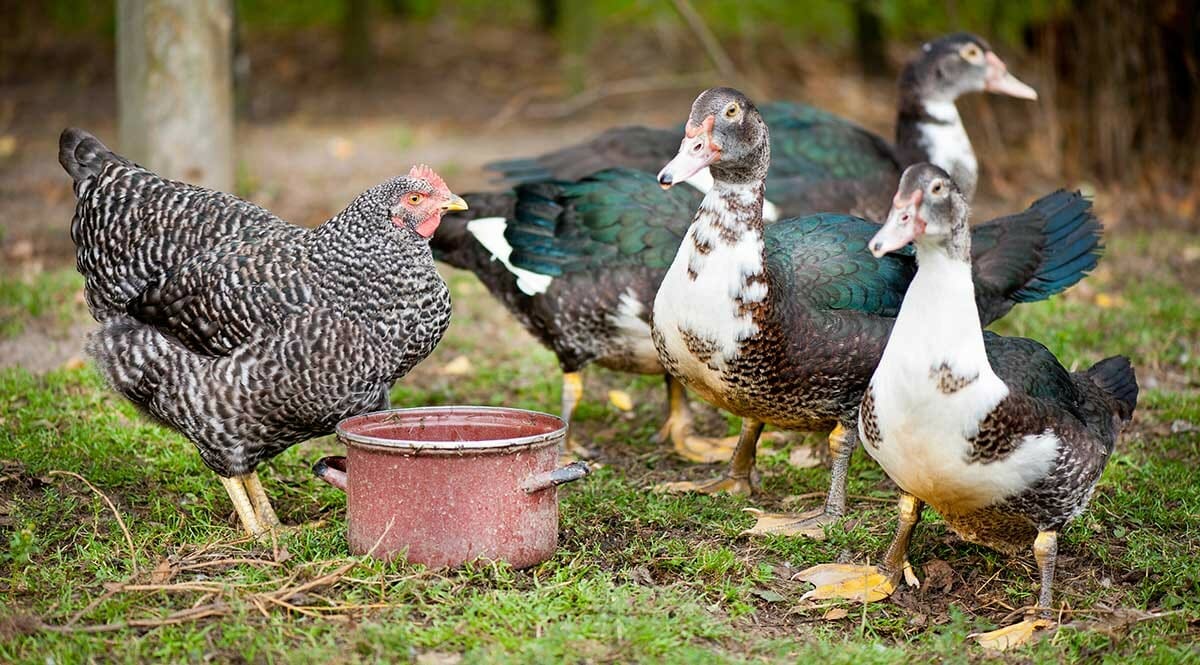The H5N2 virus is a mutation of the Asian H5N8 strain that mixed with North American types to create this highly pathogenic variety. It’s believed both viruses are being passed from wild birds to domesticated chickens and turkeys, according to the United States Department of Agriculture. If you have domesticated ducks, guinea fowl, quail or […]

The H5N2 virus is a mutation of the Asian H5N8 strain that mixed with North American types to create this highly pathogenic variety. It’s believed both viruses are being passed from wild birds to domesticated chickens and turkeys, according to the United States Department of Agriculture. If you have domesticated ducks, guinea fowl, quail or geese, they are also at risk.
Here’s what to look for and some some precautions you can take to help prevent the viruses’ spread to your own backyard flock.
Dr. John Clifford, the USDA’s chief veterinary officer, says once poultry birds are infected, they stop eating and drinking, become lethargic and show signs of torticollis, or “star gazing,” where the birds’ heads will point skyward. Death comes “pretty rapidly” following these symptoms. With chickens, there’s a drop in egg production as well, he says.
Clifford says biosecurity is the key to keeping your flock healthy. He suggests that if you live near wild waterfowl, you need to try to keep your birds enclosed “as best you can” and away from the wild birds.
Disinfecting your footwear and your hands before handling your birds are also important prevention tools.
“Individuals caring for those birds need to be very careful about making sure they’re not carrying the virus on their feet or hands into that facility,” Clifford says.
For larger operations, vehicles that are going in and out of the property should be cleaned and disinfected, along with any equipment that might travel from hen house to hen house, says Clifford.
According to Dr. David Swayne, the head of the USDA’s Southeast Poultry Research Lab, the water source for backyard flocks should not come from groundwater, such as ponds or lakes where wild birds might be, but should instead come from a municipal water source or well.
Luckily, with the rising temperatures, we should see a drop off of the viruses, but Swayne says he can’t predict exactly when that might be.
“We know this virus doesn’t like heat, so when we get to a certain level of temperature, this virus doesn’t survive easily,” he says. “With the sunshine comes ultraviolet light that will kill the influenza virus. It’s kind of hard to just predict a particular date and say beyond this point we’ll have a drop-off in cases, because the virus is not surviving in the environment. It’s complex. Dryness also helps reduce the life of the virus in the environment, as well as the increase in the temperature and amount of ultraviolet light.”
Clifford says there is the possibility the virus will return later in the year and that it could spread to the East Coast.
“I would hope that we wouldn’t see any more; however, because of the fact that the virus has seemed to adapt itself so well to the waterfowl…we would anticipate seeing the virus in the fall.”
There haven’t been any cases of human infection by this specific type of avian flu, but the U.S. Centers for Disease Control & Prevention is keeping close tabs on the virus, says Dr. Alicia Fry of the CDC’s Influenza Division.
Clifford, Swayne and Fry answered reporters’ questions during a media call last week.